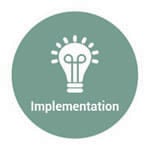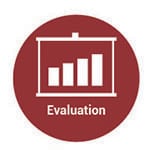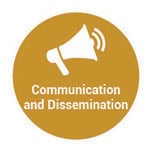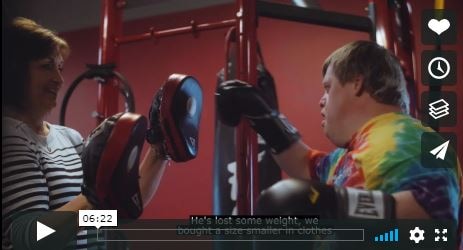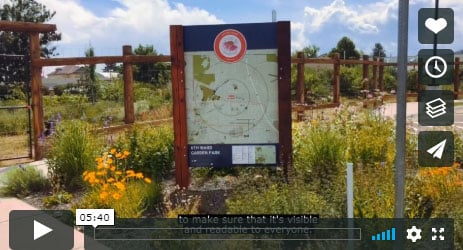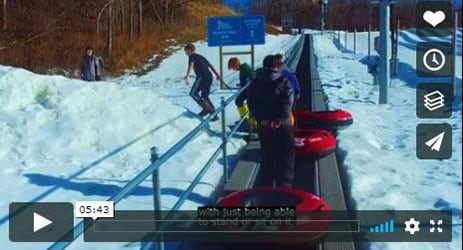Phase 4: Implementation
Audio File (11 minutes)
Listen to David Ellsworth, State Expert Advisor for Ohio, talk about how he worked with Adams and Marion community coalitions to successfully implement policy, systems, and environmental (PSE) changes using the twin approach.
The fourth phase of the Inclusive Healthy Communities Model is Implementation, in which you will work with your community coaches, community coalition, and partners to complete the policy, systems, and environmental (PSE) changes designed to improve the health and well-being of people with disabilities.
During the Implementation Phase, your community coalition will be able to
- Execute its vision and begin to achieve the outcomes outlined in the community action plan.
WHY is this phase important?
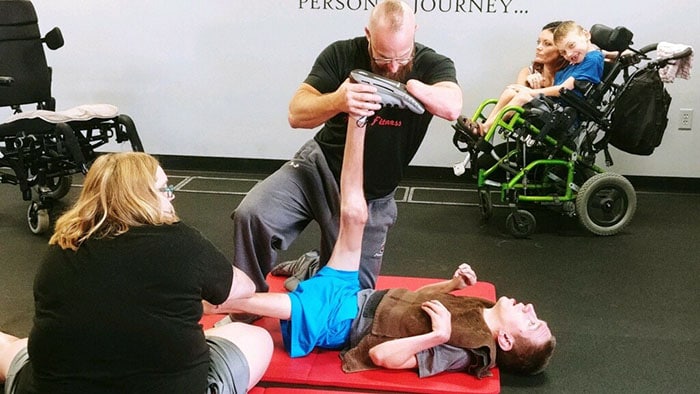
By implementing policy, systems, and environmental (PSE) changes for addressing poor nutrition, physical inactivity, accessibility issues, and tobacco use and exposure for people with disabilities, your community coalition will be able to potentially reach greater numbers of people with long-term impact.
WHAT activities take place during this phase?
- Initiate implementation by following the action steps for each goal and objective that you outlined on your community action plan. Your community action plan can serve as a “road map” during the Implementation Phase to ensure best use of resources.
- Think about sustainability with each policy, systems, and environmental (PSE) change that you successfully implement. Sustainability is best achieved by thinking of the end at the beginning of the project. Complete a sustainability planexternal icon, which helps community coalitions to consider six areas of longevity for your disability inclusion efforts:
- Coalitions and partnerships;
- Policy, systems, and environmental (PSE) strategies;
- Social marketing and communication;
- Integration;
- Mentoring and peer learning; and
- Funding.
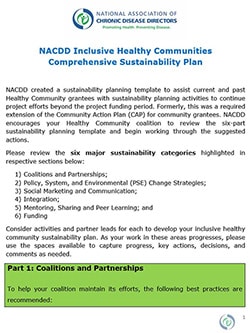
See the Sustainability Planning templateword iconexternal icon: developed by NACDD for their project Reaching People with Disabilities through Healthy Communities
- Revisit your community action plan to review your implementation progress and make updates. The community action plan can be viewed as a living document, one to be reviewed and revised on a regular basis. Tracking the objectives and related activities in your community action plan will make it possible to determine if your disability inclusion efforts are occurring as planned, or if adjustments should be made to activities. Facing barriers is common but documenting them facilitates their use as learning opportunities to improve upon your activities. Also, by documenting progress and reassessing activities on a regular basis (e.g., annually, bi-annually), the community action plan can be updated and revised, as needed, to align with new or emerging needs within the community.
Watch this videoexternal icon produced by NACDDexternal icon to learn how policy, systems, and environmental (PSE) changes implemented in Carroll County, Iowa, helped improved physical activity for people with disabilities.
- Lastly, give your community coalition a chance to celebrate successes along the way. These moments to reflect and appreciate the coalition’s achievements will help to bring further awareness to community partners and stakeholders about your work, as well as bolster further support and sense of commitment among community coalition members.
WHO in the community needs to be involved?
Watch this videoexternal icon produced by NACDDexternal icon on how the community coalition in Helena, MT, worked with local partners to implement sustainable changes.
Your community coalition and partners are ultimately all involved in the implementation process. Maintaining a high level of commitment among coalition members and involving additional community partners is critical during the Implementation Phase so that you can foster and preserve a shared sense of responsibility, empowerment, and ownership for achieving your community action plan.
How much TIME does this phase take?
Watch this videoexternal icon produced by NACDDexternal icon on how PSE changes were implemented in Sioux City, Iowa, to make parks inclusive for people with disabilities.
The Implementation Phase begins when the initial community action plan is developed, and is complete once you’ve implemented and achieved your inclusive policy, systems, and environmental (PSE) strategies. However, if your disability inclusion vision is woven into the overall mission of an already established community coalition, the Implementation Phase could be extended as long as
- Community coalition members are committed;
- Reassessment and revisions are made to the community action plan as new needs emerge; and
- The community action plan is revised and tracked on a regular basis.
There is no time limit to the Implementation Phase as long as the community coalition is still functioning.
What does SUCCESS look like?
Audio File (5 minutes)
Listen to David Ellsworth, State Expert Advisor for Ohio, talk about why it is critical to plan for sustainability at the very beginning of the project and how to do it.
Successful implementation will include the following characteristics:
- A community action plan used as a road map to guide and chart the community coalition’s successes;
- Ongoing review of the community action plan to track progress and re-assess and record emerging needs within the community;
- A plan for sustainabilityexternal icon;
- Acknowledgement of challenges and lessons learned, using them as helpful tools for adjusting activities as needed; and
- Celebrations for achieving community awareness of the community coalition’s disability inclusion efforts and maintaining coalition commitment.



